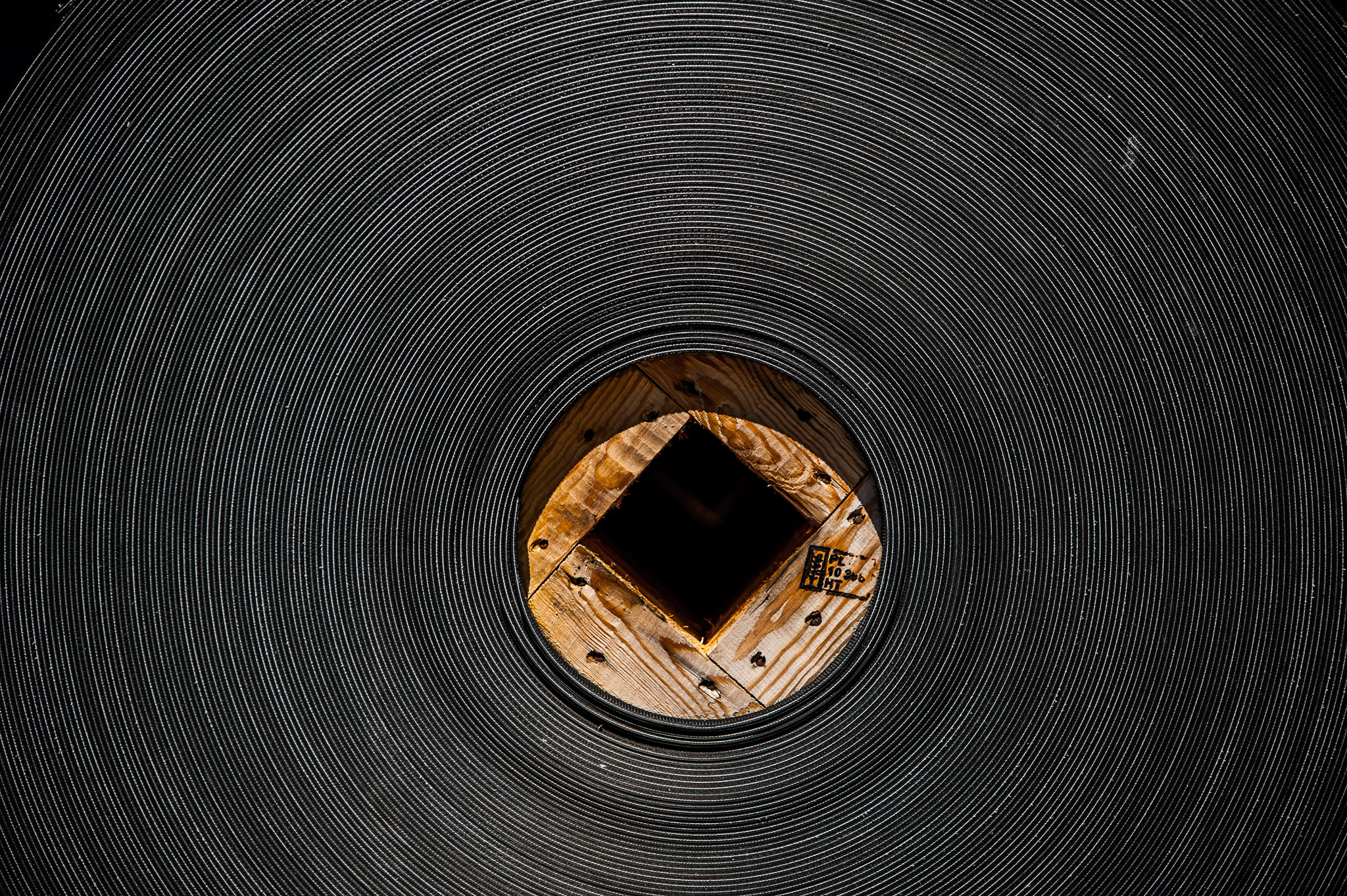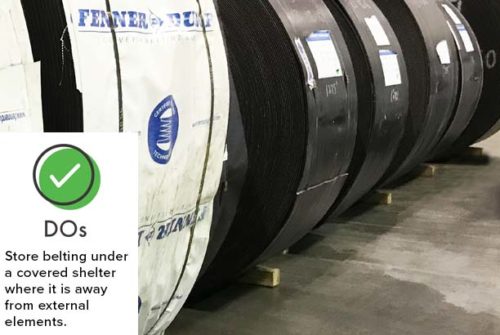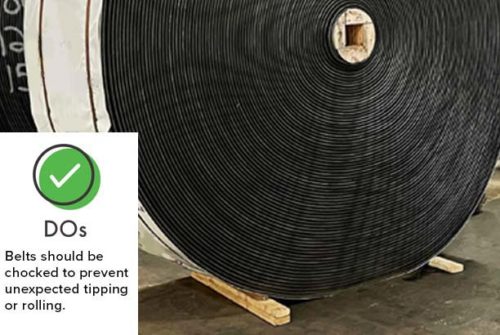
The Do’s and Don’ts of Proper Conveyor Belt Handling & Storage
The Do’s and Don’ts of Proper Conveyor Belt Handling & Storage
By Fenner Dunlop Staff
At Fenner Dunlop, we offer over 150 years of conveyor belt manufacturing experience. We are proud of the fact that over the course of our rich history, our engineers and technicians have consistently led the world in developing and refining conveyor belts that provide top-class performance combined with the longest possible operational lifetime.
Our knowledge extends beyond the manufacturing process to conveyor belt installation, splicing, proactive monitoring and maintenance. But one thing we often find is that the proper way to handle and store a conveyor belt is a topic that is often neglected.
It is always our goal to educate and provide tips on how to make the most out of your conveyor belt, which is why proper storage is important because even large industrial conveyor belts can be damaged if they are not stored or handled correctly.
Proper Handling Techniques
The first thing to consider is the actual off-loading of the belt rolls onto your premises. The best way to move a rolled belt is to use a properly rated shaft through the center core and preferably a spreader so the chain does not damage the belt when lifting. Never allow the roll to be dropped or rolled off the transporter. The same applies when moving the belt to its final location where it will be installed.

The first thing to consider when unloading a roll of belt at your premises is how to do so in the most safe and efficient manner possible. In general, the best practices are as follows:
- Utilizing engineered rigging systems. This includes a properly rated shafting, certified chains, shackles, etc.
- Consider utilizing a spreader system to prevent damaging the belt.
- The same applies when staging the belt for installation.
When utilizing forklifts, boom trucks or cranes, the following should be considered:
- Proper rating of the machinery.
- Equipment capacity, based on distance of lift from load center.
- Overall available operational space to safely make the lift(s).
Proper Storage Techniques

There are a number of factors that can have a detrimental effect on the belt while being stored. In terms of the actual storage environment, the ideal place to store conveyor belts is in an indoor facility that is climate controlled, such as a warehouse or shop preferably under a covered shelter such as a warehouse. However, it is understood that a covered shelter is not always possible or available only on a limited basis.
Please keep the following in mind while storing a conveyor belt:
- Location: Store the belt on flat ground and preferably lifted off the ground to avoid damages from water, rocks, etc. If the belt needs to be stored on the ground, it should be placed where there is no debris that may cause damage to belt and securely wedged to prevent rolling. The location must be where there won’t be any pooling of water or other liquids (see contamination section below) around the belt. If the ground is sloped, the belt may roll and become dangerous to its surroundings.
- Position: The belt should be stored so the belt edge is off the ground so that potential water/snow on the ground would not come in contact with the edges. Position the roll so the shipping label is visible.
- When storing outdoors, best practice is to store the belt on belt stands, away from water, ice, snow and/or other environmental elements.
- When storing indoors, belt can be stored directly on the ground; however, belts should be chocked to prevent the roll from moving unexpectedly.
- Slit rolls should be stored to prevent potential tipping hazards.
- When storing outdoors, best practice is to store the belt on belt stands, away from water, ice, snow and/or other environmental elements.
- Storage Temperatures: The belt should not be stored under extreme temperatures. If stored at temperatures below 32ºF (0ºC), it may be necessary to condition the belt for at least 24 hours prior to use at a temperature of no less than 50ºF (10ºC) in order to improve flexibility and reduce the risk of belt damage as per ISO 5285.
- Exposure to Ozone & Ultraviolet Light: It is strongly recommended that the stored belt is kept covered and out of the sun as much as possible. Retaining original packaging materials such as wooden drums, plastic wrap and cardboard is a good idea because they provide additional protection against external influences. Storage in boiler rooms, welding shops, and rooms with radiators should be avoided. Storing belts under artificial lights with a high ultra-violet content and near equipment which is capable of generating ozone (fluorescent or mercury vapor lamps, high-voltage electrical equipment) and other places where ozone is generated should also be avoided.
- Humidity: Belts should not be stored in excessively wet, humid environments because the fabric carcass can retain moisture and the steel cords may corrode over time.
- Contamination: Avoid storing belts in areas that contain oils, gasoline, solvents, paint materials, acids or corrosive liquids.
Contact Us
Please do not hesitate to ask us questions regarding how to properly handle and store your new conveyor belt. We want to help you protect your investment for the entire duration of the conveyor belt’s lifetime. Find your local distributor here or reach out to us at info@fennerdunlop.com to inquire about pricing and the availability of our best-in-class conveyor belts.
